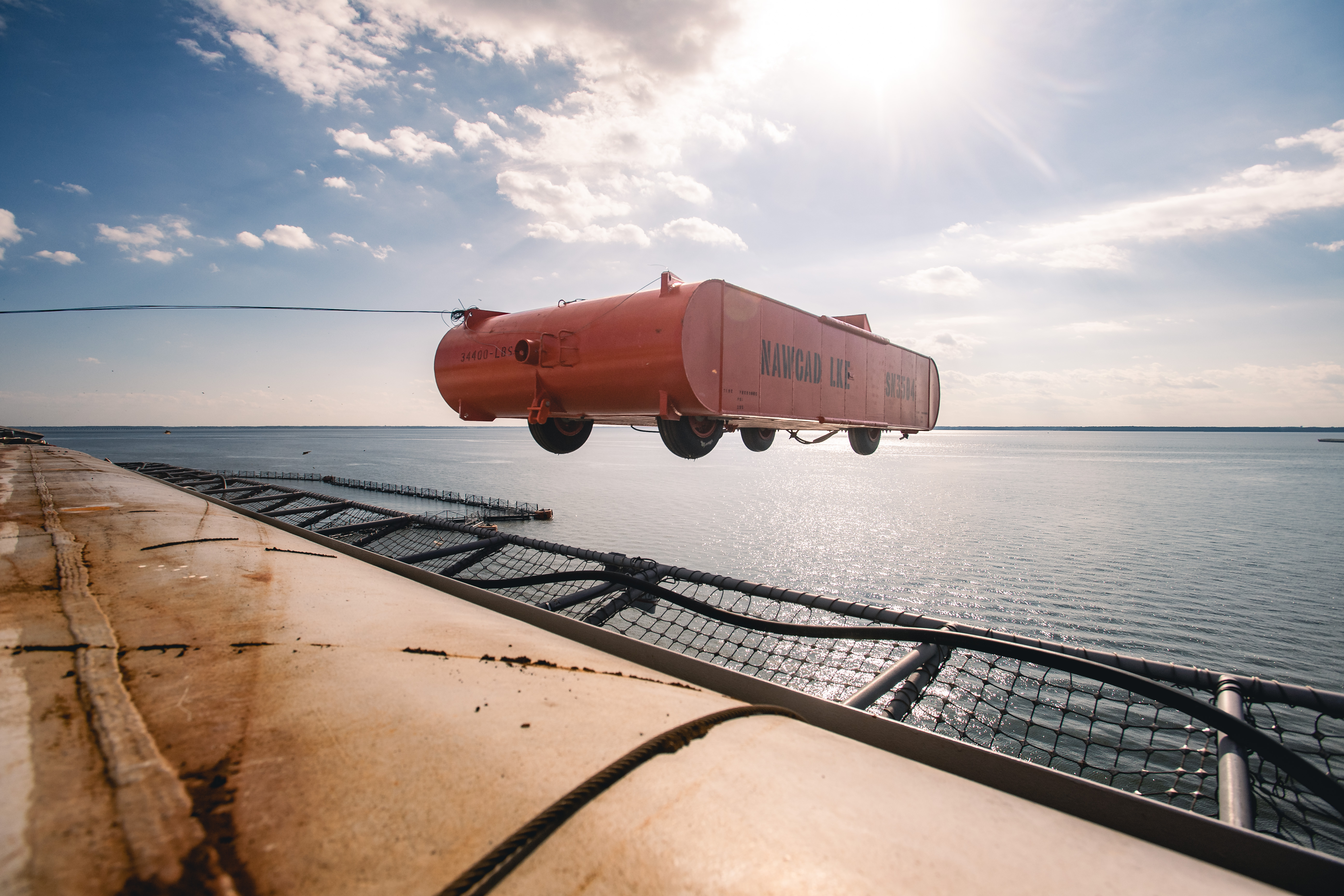HII Begins Topside EMALS Testing on John F. Kennedy (CVN 79) at Newport News Shipbuilding
NEWPORT NEWS, Va., Feb. 21, 2024 (GLOBE NEWSWIRE) -- HII (NYSE: HII) announced today that its Newport News Shipbuilding division (NNS) recently began topside testing of the electromagnetic aircraft launch system (EMALS) on aircraft carrier John F. Kennedy (CVN 79).
EMALS, first integrated into USS Gerald R. Ford (CVN 78), replaces the existing steam catapults currently in use on the U.S. Navy’s Nimitz-class aircraft carriers.
Following successful “no-load” testing on catapults one and two, known as the ‘bow cats,’ the NNS team, alongside the John F. Kennedy crew, has now started “dead-load” testing. In this phase, large, wheeled, car-like structures of graduated weights up to 80,000 pounds to simulate the weight of actual aircraft are launched off the carrier’s bow into the James River. They are then retrieved and relaunched until the conclusion of the test program to ensure the catapults are ready for their primary intended purpose: to launch all carrier-based fixed wing aircraft flown by the U.S. Navy.
The first dead loads used in this testing have special significance. Family members of shipbuilders signed them with messages of congratulations and gratitude during the shipyard’s Family Day held in October.

Photos and video accompanying this release is available at: https://hii.com/news/hii-newport-news-shipbuilding-carrier-cvn-79-dead-load-testing/.
“As we make sustained progress in the construction, testing and turnover of John F. Kennedy, reaching the dead load testing phase is a visual demonstration of how far we’ve come,” said Lucas Hicks, vice president, John F. Kennedy (CVN 79) new construction aircraft carrier program. “It is evident from the thousands of written messages that our shipbuilders and their families appreciate and understand the significance of our work. We are proud of the incredible teamwork that has brought us to this point, and remain committed to delivering this mighty aircraft carrier to the fleet so the crew can carry out the important mission ahead.”
“The first dead-load launch off the flight deck is a historic moment for PCU John F. Kennedy, and a testament to the power of great teamwork between our JFK crew, HII team, and NAVAIR engineers,” said CAPT Colin Day, commanding officer, PCU John F. Kennedy (CVN 79). “I’m particularly proud of our Air Department and the hard-working Aviation Boatswain Mates who worked tirelessly alongside the engineering and testing teams to get us to this critical moment.”
Traveling more than 300 feet down the catapult track at more than 150 miles per hour, EMALS provides expanded operational capability at reduced costs, higher launch-energy capacity, and more accurate end-speed control, with a smooth acceleration at both high and low speeds. The launch profiles have been optimized to reduce stress on the aircraft, in contrast to the sudden acceleration of steam catapults.
Kennedy is the second Gerald R. Ford-class aircraft carrier under construction at NNS, which is the nation’s sole designer, builder and refueler of nuclear-powered aircraft carriers. In addition to Kennedy, two other Ford-class carriers are under construction at NNS: Enterprise (CVN 80) and Doris Miller (CVN 81).
About HII
HII is a global, all-domain defense provider. HII’s mission is to deliver the world’s most powerful ships and all-domain solutions in service of the nation, creating the advantage for our customers to protect peace and freedom around the world.
As the nation’s largest military shipbuilder, and with a more than 135-year history of advancing U.S. national security, HII delivers critical capabilities extending from ships to unmanned systems, cyber, ISR, AI/ML and synthetic training. Headquartered in Virginia, HII’s workforce is 44,000 strong. For more information, visit:
- HII on the web: https://www.HII.com/
- HII on Facebook: https://www.facebook.com/TeamHII
- HII on X: https://www.twitter.com/WeAreHII
- HII on Instagram: https://www.instagram.com/WeAreHII
Contact:
Todd Corillo
Todd.T.Corillo@hii-co.com
(757) 688-3220
A photo accompanying this announcement is available at https://www.globenewswire.com/NewsRoom/AttachmentNg/2e040a04-5924-451d-af9d-fba19ea8a160








